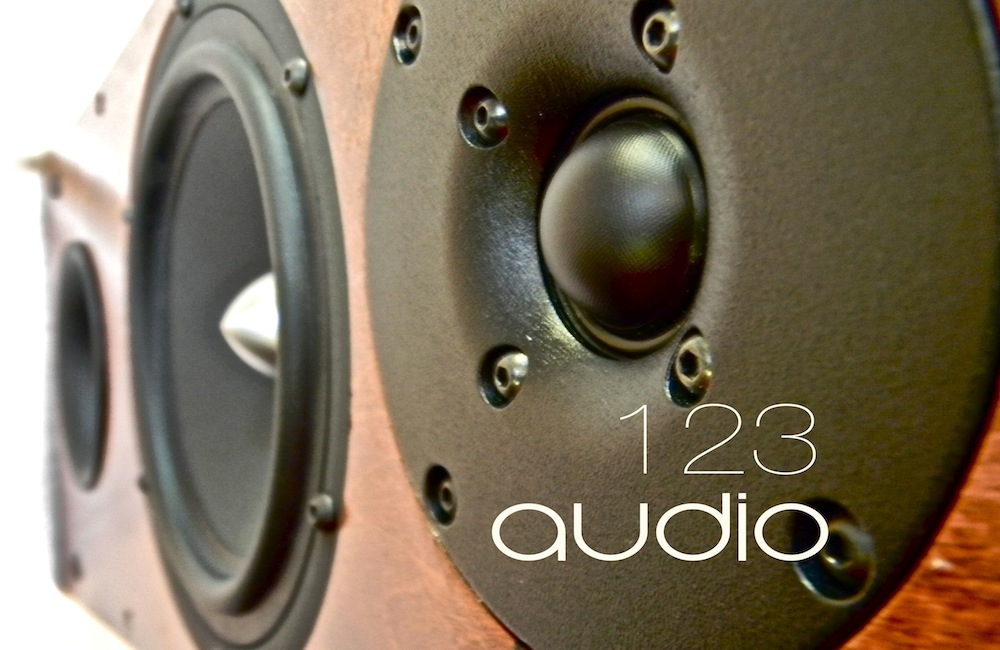The simple answer is mono, or monaural audio, means one. But one what? If we are talking about music reproduction – is it one instrument? One microphone? One source channel? One amplifier? One speaker?
The answer is not so simple. A mono digital or analog source is information stored as a single sound “track.” The sound track can have different forms, such as a data file, or groove in a vinyl record, or magnetized length of a tape. In order to become sound we can hear, the sound track is converted to an electrical signal, either via a digital-to-analog converter, or a record player, or a tape player. The electrical signal is then amplified so that a physical loudspeaker (or headphones) creates sound vibrations we can hear. The mono source sound track can contain the sound of many instruments, and can be the result of recordings by a single microphone or many microphones.
Let’s talk a little about how recordings are made. Sometimes a live performance is captured. The simplest way to do a mono recording of a live performance is to have a single microphone and to capture the performance with no edits, and what comes into the microphone gets recorded onto the one and only track of the final source recording. One might record an orchestra with a single microphone suspended in the middle in front of the orchestra. More about this in other blog posts, but in the 1950s, a famous set of Living Presence recordings were made by Mercury Records, and the mono version used a single microphone to record the sound.
Many recordings though are the results of edits and separate recordings of individual tracks which are later combined into some final number of tracks. For a music recording made in a studio, the individual sound tracks are often recorded separately and the final recording built up as layered tracks. First there might be a click track to establish the tempo, then maybe a track for the drums or piano, then vocals are added, and so on – and the individual tracks are each “mono.” Thus the different tracks of say a pop song may be recorded at different times (and even in different studios). If the final result such as a sound file is “mono,” it means that the separate tracks have been “mixed down” or combined to form a single sound track. We’ll talk about what it means for the final result to be “stereo” in another post.
Back in the day, radio was mono, and most of the recordings were mono, and people usually listened through a single loudspeaker, I guess the reasoning was that if it’s a single source track you only need a single speaker to reproduce the sound. My dad, like many engineers of his day, built his own speaker from a kit, and it was a big ugly rectangular thing with a single large bass unit (woofer) and a horn tweeter, all covered up by grill cloth and with a plain wood top. I didn’t think it sounded very good, and I associated mono with scratchy old recordings that also didn’t sound good.
But mono can be more. Earlier this summer I attended the 4th of July outdoor concert at Shoreline Amphitheatre, the San Francisco Symphony performs live with a guest conductor and narrators and singers, it is great. I sat far from the stage, on the lawn, and the live sound of the performers was of course amplified by numerous speakers, I am pretty sure it was a mono reproduction, with all the sound combined into a single signal that fed all the speakers equally.
I found a good discussion about mono (and stereo, but that’s getting ahead of this post) here: http://www.mcsquared.com/mono-stereo.htm. Of interest to this blog post: “Mono systems can have multiple loudspeakers, and even multiple widely separated loudspeakers. …Mono systems can still be full-bandwidth and full-fidelity and are able to reinforce both voice and music effectively. The big advantage to mono is that everyone hears the very same signal, and, in properly designed systems, all listeners would hear the system at essentially the same sound level.”
That’s all for this post, on to stereo and 2-channel in coming posts.
